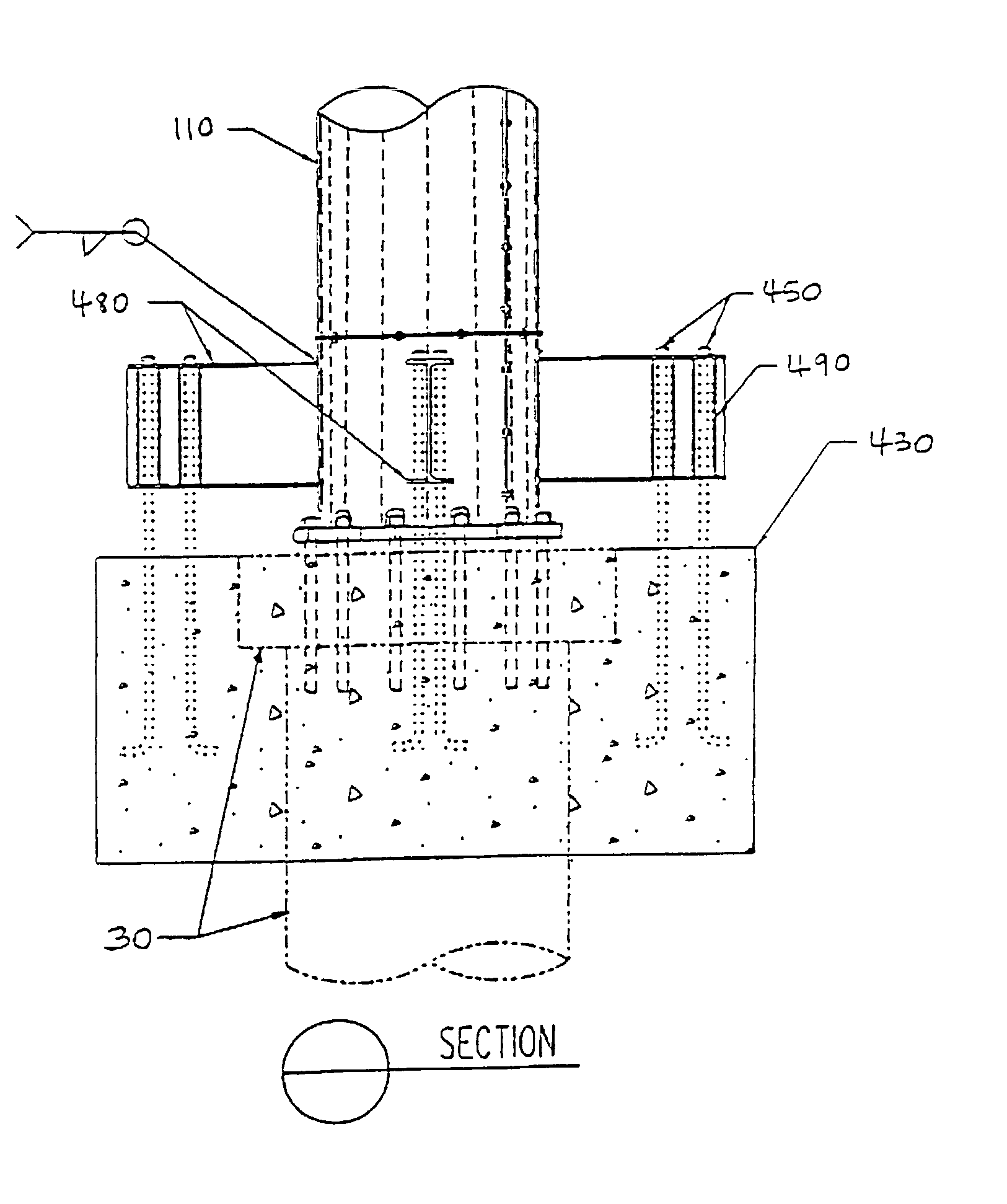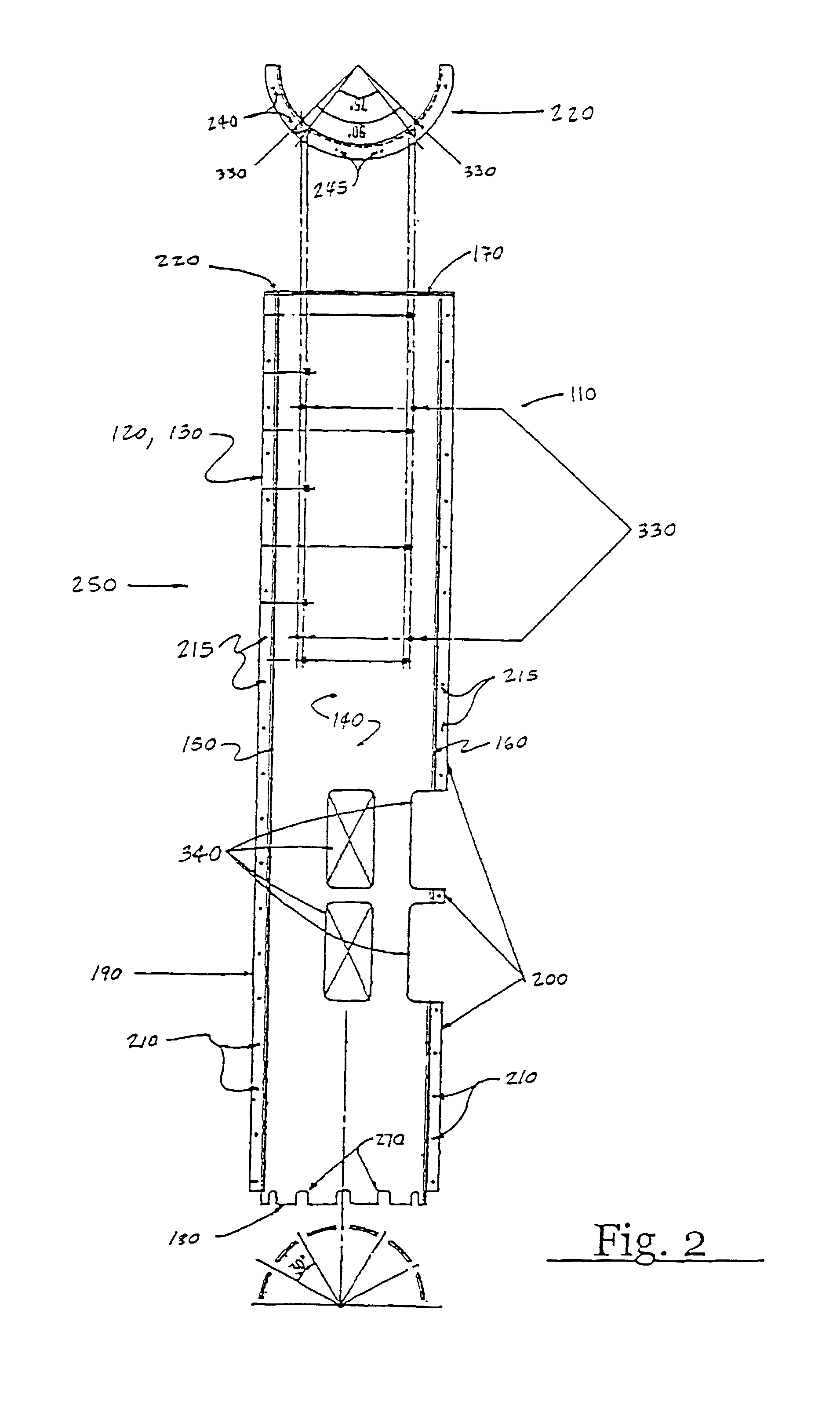Method and apparatus for increasing the capacity and stability of a single-pole tower
a single-pole tower and capacity technology, applied in the direction of towers, buildings, constructions, etc., can solve the problems of increasing construction costs, concomitant incise, increasing the cost of land or easements, etc., to increase the capacity and stability of a single-pole tower, stabilize the additional load, and stabilize the load
- Summary
- Abstract
- Description
- Claims
- Application Information
AI Technical Summary
Benefits of technology
Problems solved by technology
Method used
Image
Examples
Embodiment Construction
[0029]Referring now in more detail to the drawings, in which like numerals indicate like elements throughout the several views, FIG. 1 shows a single pole tower 10 for use with the present invention. As is well known in the art, the single pole tower 10 generally includes a pole 20 of varying height. The pole 20 is generally a hollow structure made from various types of steel, composite materials, or other types of sufficiently rigid materials. The pole 20 may be a tapered structure such that it decreases in width as its height increases. The pole 20 may be mounted on a foundation 30 by a base plate 40 and a plurality of anchor bolts 50. The foundation 30 is generally a reinforced concrete structure that may by anchored by conventional means. The base plate 40 and the anchor bolts 50 are generally made from various types of steel or other types of sufficiently rigid materials. One or more loads 60 may be fixedly attached to the pole 20. In the present embodiment, the load 60 may inc...
PUM
 Login to View More
Login to View More Abstract
Description
Claims
Application Information
 Login to View More
Login to View More - R&D
- Intellectual Property
- Life Sciences
- Materials
- Tech Scout
- Unparalleled Data Quality
- Higher Quality Content
- 60% Fewer Hallucinations
Browse by: Latest US Patents, China's latest patents, Technical Efficacy Thesaurus, Application Domain, Technology Topic, Popular Technical Reports.
© 2025 PatSnap. All rights reserved.Legal|Privacy policy|Modern Slavery Act Transparency Statement|Sitemap|About US| Contact US: help@patsnap.com



